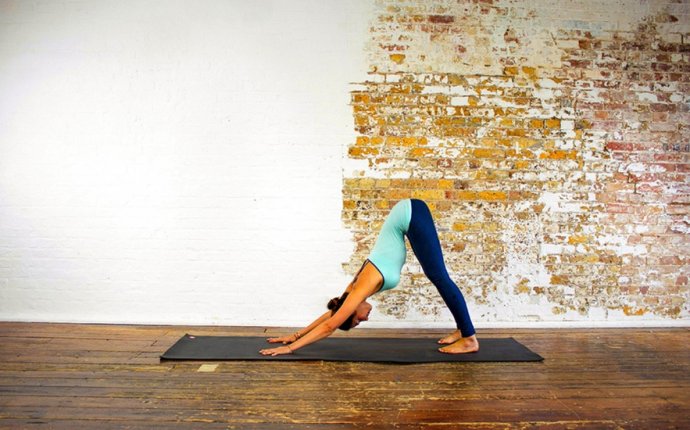
Yoga Asanas for Lower back Pain
Does the word “yoga” conjure up images of willowy young women and men meditating serenely or contorting their bodies into improbable, pretzellike shapes? If you think that’s all yoga is good for, you’re in for a pleasant surprise, especially if you suffer from chronic low back pain. That’s because a growing number of medical professionals are finding that yoga can provide relief for some low back pain sufferers.
The Evidence for Yoga Mounts
Claims about the benefits of yoga aren’t coming just from New Age followers. Within the past few years, findings from well-designed, peer-reviewed studies have begun to move the practice of yoga beyond the category of alternative therapy.
One widely cited 2005 study from Annals of Internal Medicine followed three groups of adults (101 people total) with chronic low back pain over a 12week period, comparing their experiences with yoga, conventional physical therapy, or a selfhelp book. Yoga yielded significantly better results overall, with benefits that included reduced pain and improved back function. Importantly, these benefits lasted at least 14 weeks after the yoga intervention ended.
Other, more recent studies have produced similar results. Research in Spine in 2009 followed 90 adults who practiced yoga therapy or received conventional medical care for six months. Not only did the yoga group report significantly more functional ability, less pain, and less depression, they also tended to use less pain medication than the group receiving conventional treatment.
Researchers have not yet determined how yoga helps relieve low back pain. Among the possible hypotheses: It increases muscle strength and flexibility, reduces muscle tension, decreases fear and avoidance of movement, and reduces psychological stress.
Is Yoga Right for You?
Although the study results are encouraging, yoga isn’t the answer for everyone with chronic low back pain. The studies only looked at the effect of yoga in people with back pain caused by minor issues such as muscle strains and sprains. If a more serious condition, such as a herniated disk, scoliosis, spinal stenosis, spondylolisthesis, or a vertebral compression fracture, is responsible for back pain, certain yoga poses might worsen the condition and, in some cases, it may be best to avoid yoga altogether.
To be safe, check with your doctor before you begin a yoga program—or any other exercise regimen. He or she can also advise you on what level of physical activity is safe and what yoga postures you might need to modify or avoid.
Not All Yoga Is the Same
If your doctor gives you the green light, make sure you know exactly what type of yoga is being taught before you sign up. Some schools of yoga like Kundalini, Ashtanga, and Bikram (“hot”) yoga are fairly specialized and may be too chal lenging for beginners. The Annals of Internal Medicine study evaluated Viniyoga, while the Spine study used Iyengar yoga. Both of these yoga types are appropriate for newcomers and those with physical limitations such as back pain.
Regardless of the type of yoga you choose, it’s important to find a qualified instructor who is experienced in teaching people with low back pain. Your doctor or physical therapist may be able to recommend a teacher. Or try checking with organizations that offer reputable yoga teacher training programs, such as the American Viniyoga Institute ( the Iyengar Yoga National Association of the United States ( or B.K.S. Iyengar Yoga (www.bksiyengar.com).
Yoga Poses for Low Back Pain
The following yoga movements, or asanas, are similar to the Viniyoga postures used by the participants in the Annals of Internal Medicine report. While you can try these poses on your own, it’s always a good idea to work with a qualified instructor who can help you modify and correct any poses for maximum benefit and safety. The instructor can also help you incorporate deep breathing and meditation into your yoga routine.
A word of caution: Yoga’s fastgrowing popularity has yielded an equally rapid rise in the number of yogarelated injuries. To avoid these, work within your physical limitations and modify or skip any poses that are difficult or painful.
Bridge Pose
Lie on your back with your knees bent and your arms on the floor at your sides. With your feet flat on the floor, lift your hips off the floor and slowly raise your back. Exhale and reverse the movement, lowering your back down to the floor.
Knee-to-Chest Pose
With your left leg straight and right leg bent, hold the right knee with both hands. Exhale as you pull your right knee toward your chest. Inhale as you release. Repeat several times, then switch to your left knee and repeat.
Reclining Bound Angle Pose
On your back with your knees bent and your feet together, slowly open the legs as you bring the soles of the feet together while lowering your knees to the side. Exhale as you bring the knees back together; repeat several times.
Corpse Pose
Lie on your back with your arms at your sides, palms up, and legs straight out on the floor, or on a pillow to reduce the pressure on the lower back. Find a comfortable position where your body can rest deeply. Breathe slowly and deeply as you go into a state of total relaxation for at least three minutes.
Cat Pose
On your hands and knees, inhale and lift your chest and stretch the belly. Exhale and move your hips back toward your heels as you pull your navel in and round your lower back. Bend your elbows and lower your chest to your thighs. Inhale and return to the starting position, then repeat the movement several times.

Cobra Pose
Face down with your forearms on the floor, use the muscles in your lower back to lift your chest off the mat. Exhale and lower to the starting position, then repeat.









